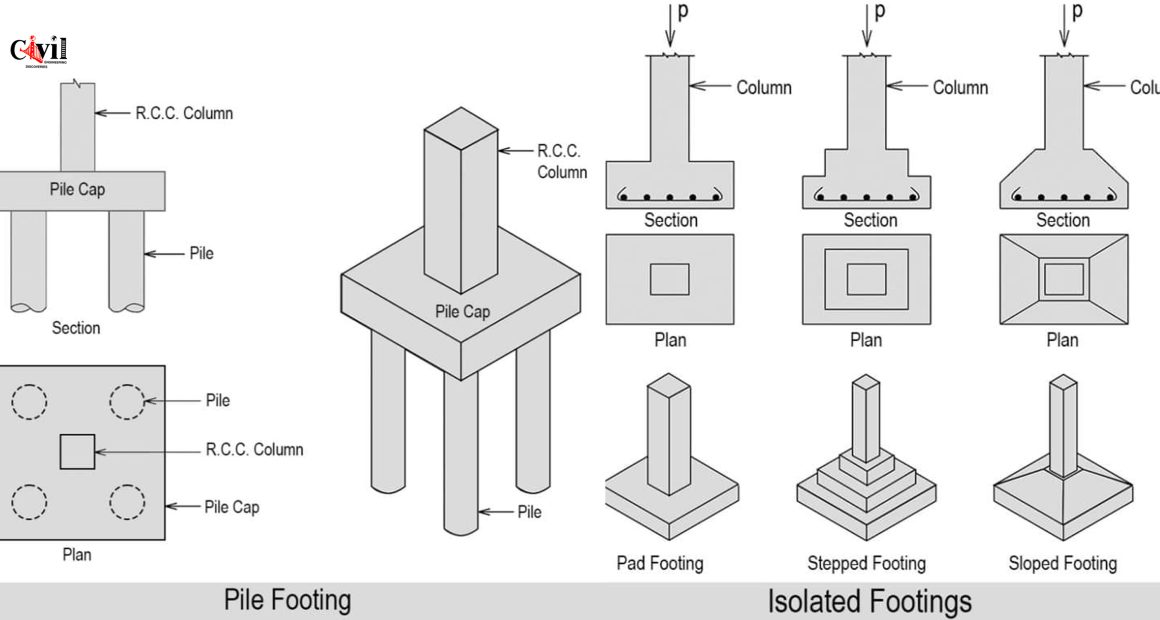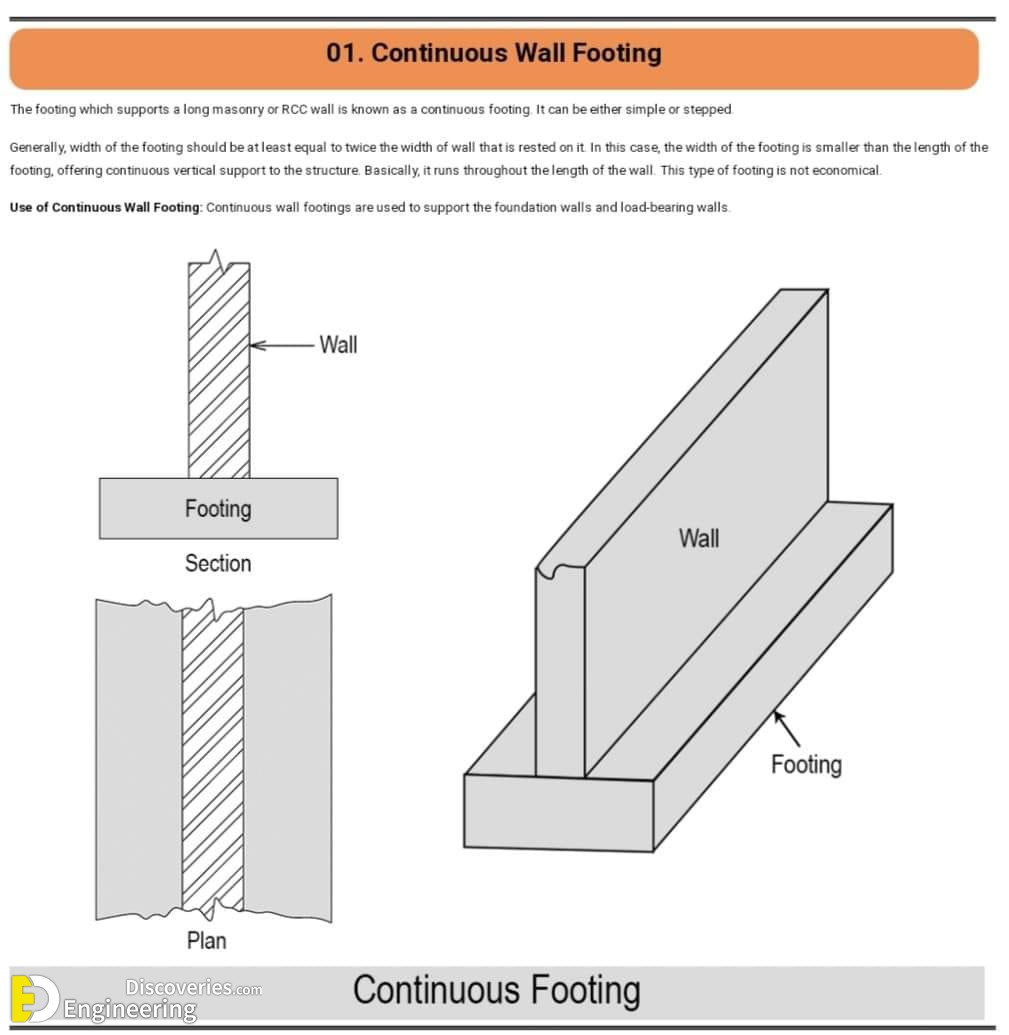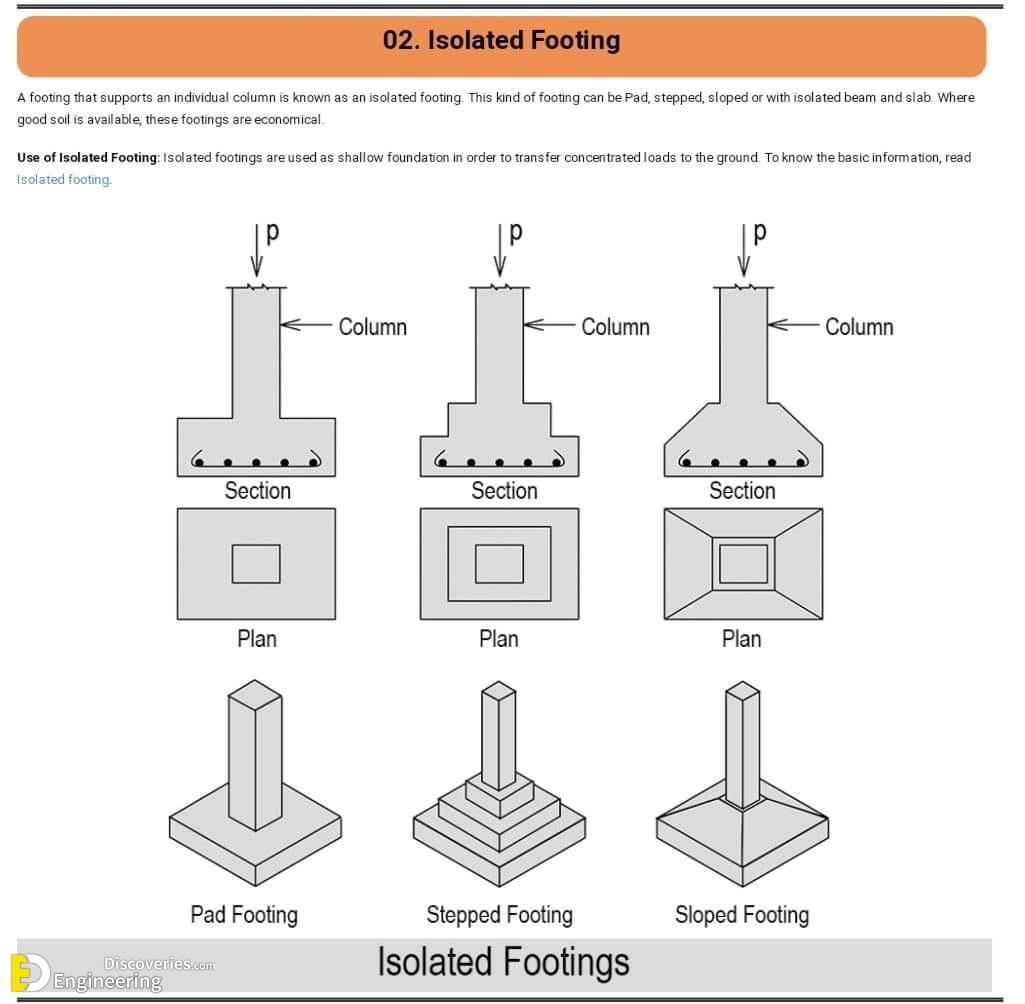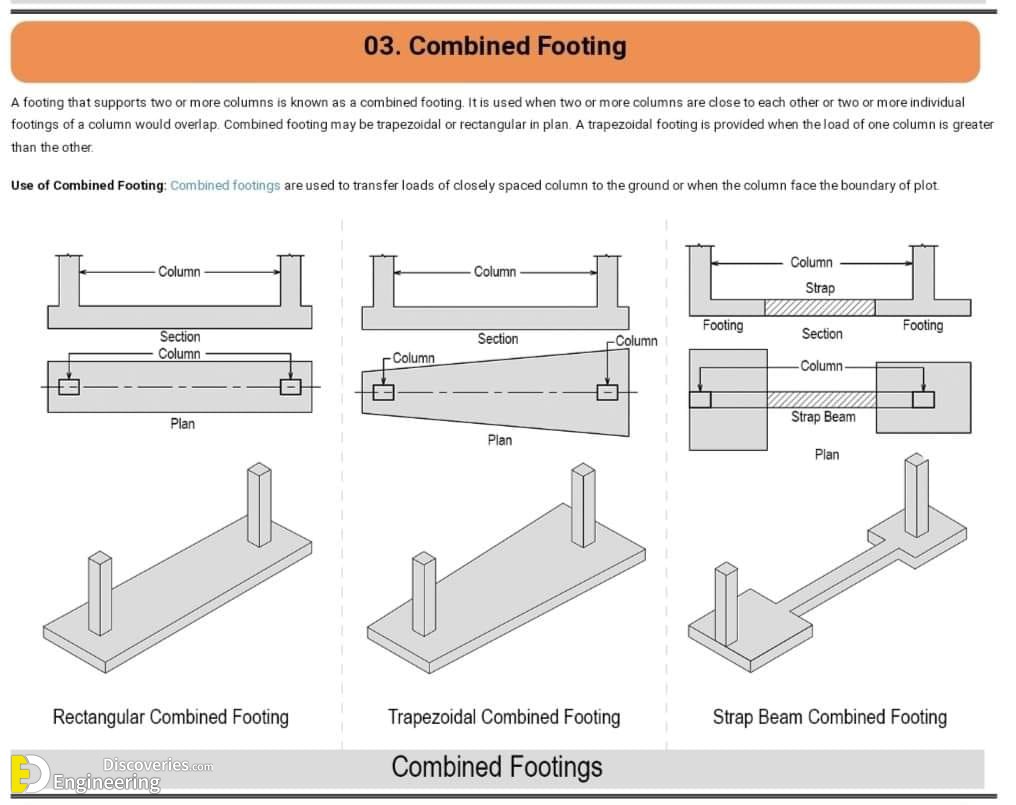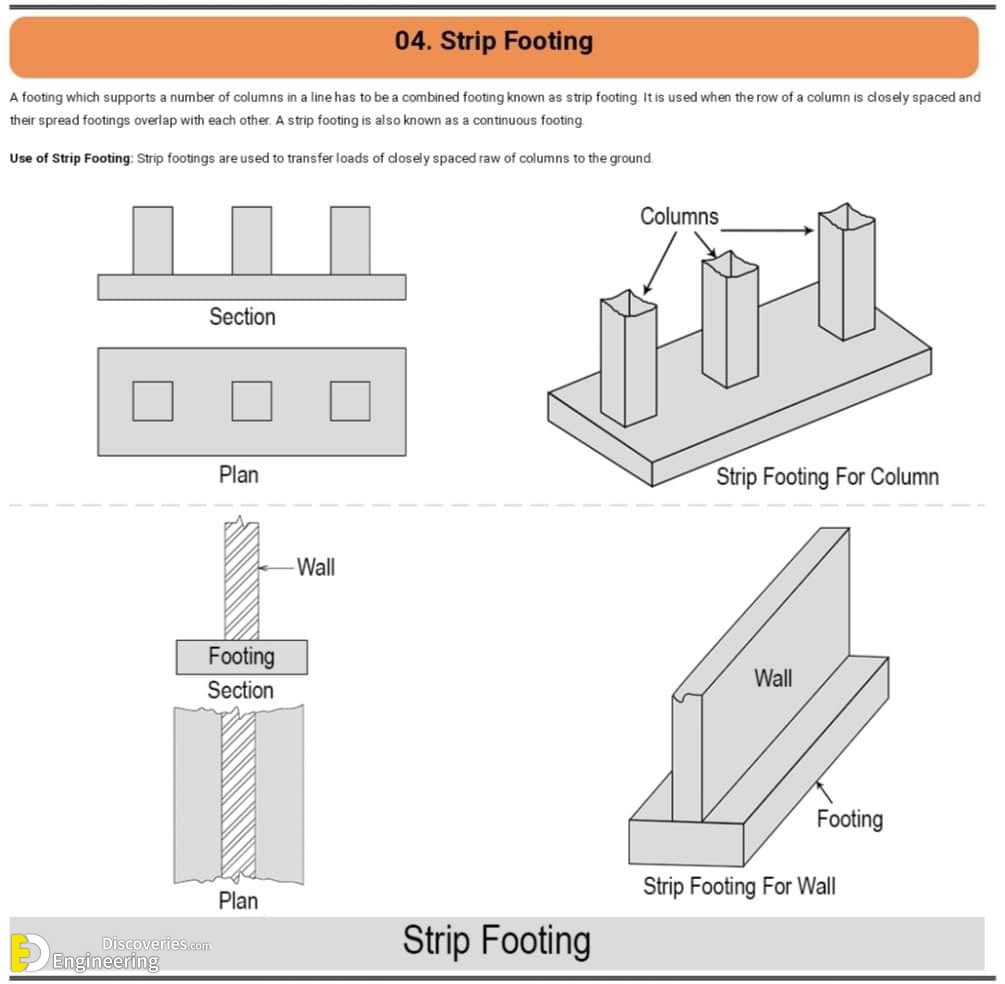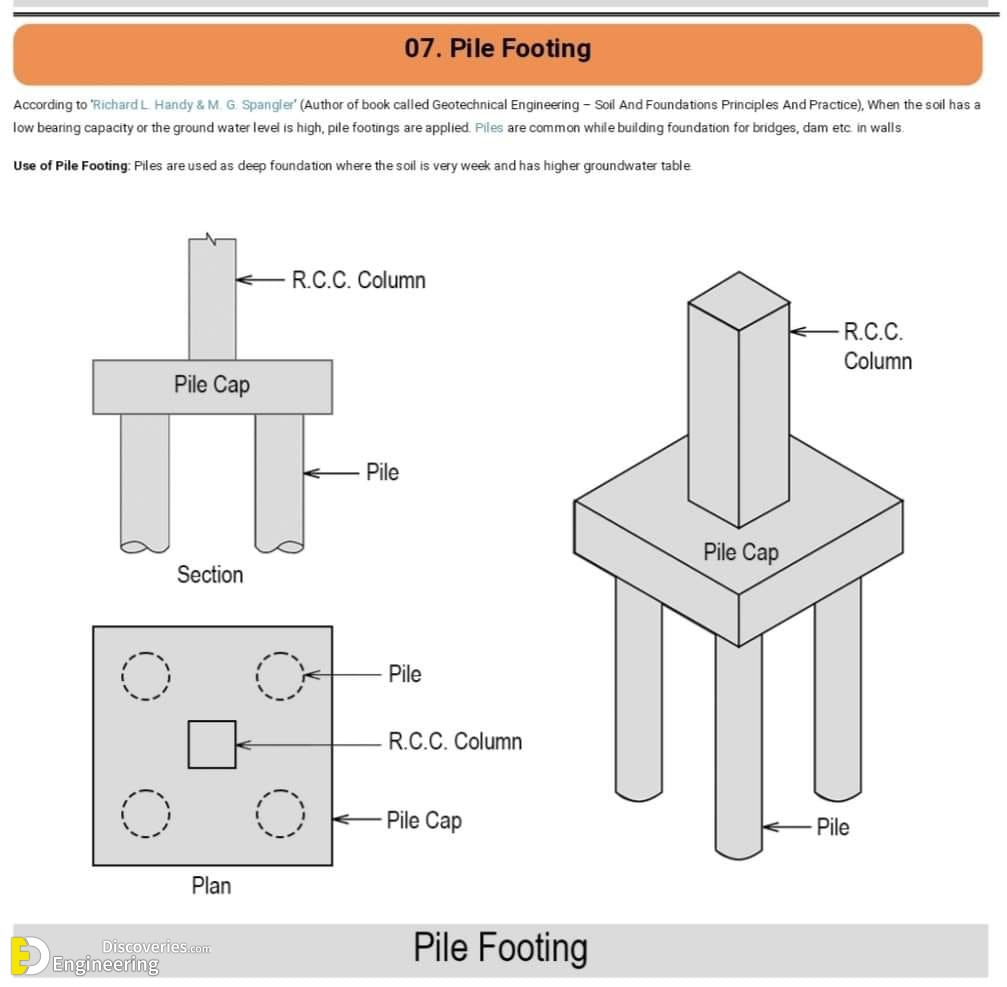A. Shallow foundation
01. Continuous Wall Footing
The footing which supports a long masonry or RCC wall is known as a continuous footing It can be either simple or stepped.
Generally, the width of the footing should be at least equal to twice the width of the wall that is rested on it. In this case, the width of the footing is smaller than the length of the footing, offering continuous vertical support to the structure Basically, it runs throughout the length of the wall. This type of footing is not economical
Use of Continuous Wall Footing: Continuous wall footings are used to support the foundation walls and load-bearing walls.
02. Isolated Footing
A footing that supports an individual column is known as an isolated footing. This kind of footing can be a Pad, stepped, sloped, or with an isolated beam and slab. Where good soil is available, these footings are economical
Use of Isolated Footing: Isolated footings are used as shallow foundations to transfer concentrated loads to the ground.
03. Combined Footing
A footing that supports two or more columns is known as a combined footing. It is used when two or more columns are close to each other or two or more individual footings of a column would overlap. Combined footing may be trapezoidal or rectangular in plan. A trapezoidal footing is provided when the load of one column is greater than the other
Use of Combined Footing: Combined footings are used to transfer loads of closely spaced columns to the ground or when the column faces the boundary of plot.
04. Strip Footing
A footing that supports several columns in a line has to be a combined footing known as strip footing It is used when the row of a column is closely spaced and their spread footings overlap with each other. A strip footing is also known as a continuous footing
Use of Strip Footing: Strip footings are used to transfer loads of closely spaced rows of columns to the ground.
05. Strap Footing
When the distance between the two columns supported on a combined footing becomes large, the cost increases rapidly. The strap footing is an economical option in such cases
Use of Strap Footing: Generally, strap footings are used in conjunction with columns of adjoining property.
06. Raft Footing
If loads transmitted by the columns in a structure are heavy and the allowable soil pressure is small then footing requires more area. In such a case, it may be better to provide continuous footing under all columns and walls. Such kind of footing is called a Raft Footing
Use of raft footing: It is widely used when soil has low load-bearing capacity.
B. Types of Deep Foundation
01. Pile Footing
When the soil has a low bearing capacity or the groundwater level is high, pile footings are applied. Piles are common while building foundations for bridges, dams, etc in walls
Use of Pile Footing: Piles are used as deep foundations where the soil is very weak and has a higher groundwater table
Click Here To See Isolated Footing Reinforcement Detailing | Reinforced Concrete Footing
